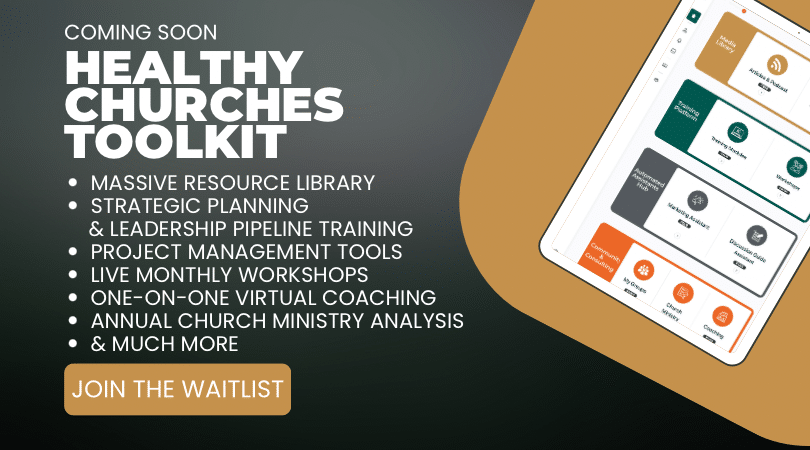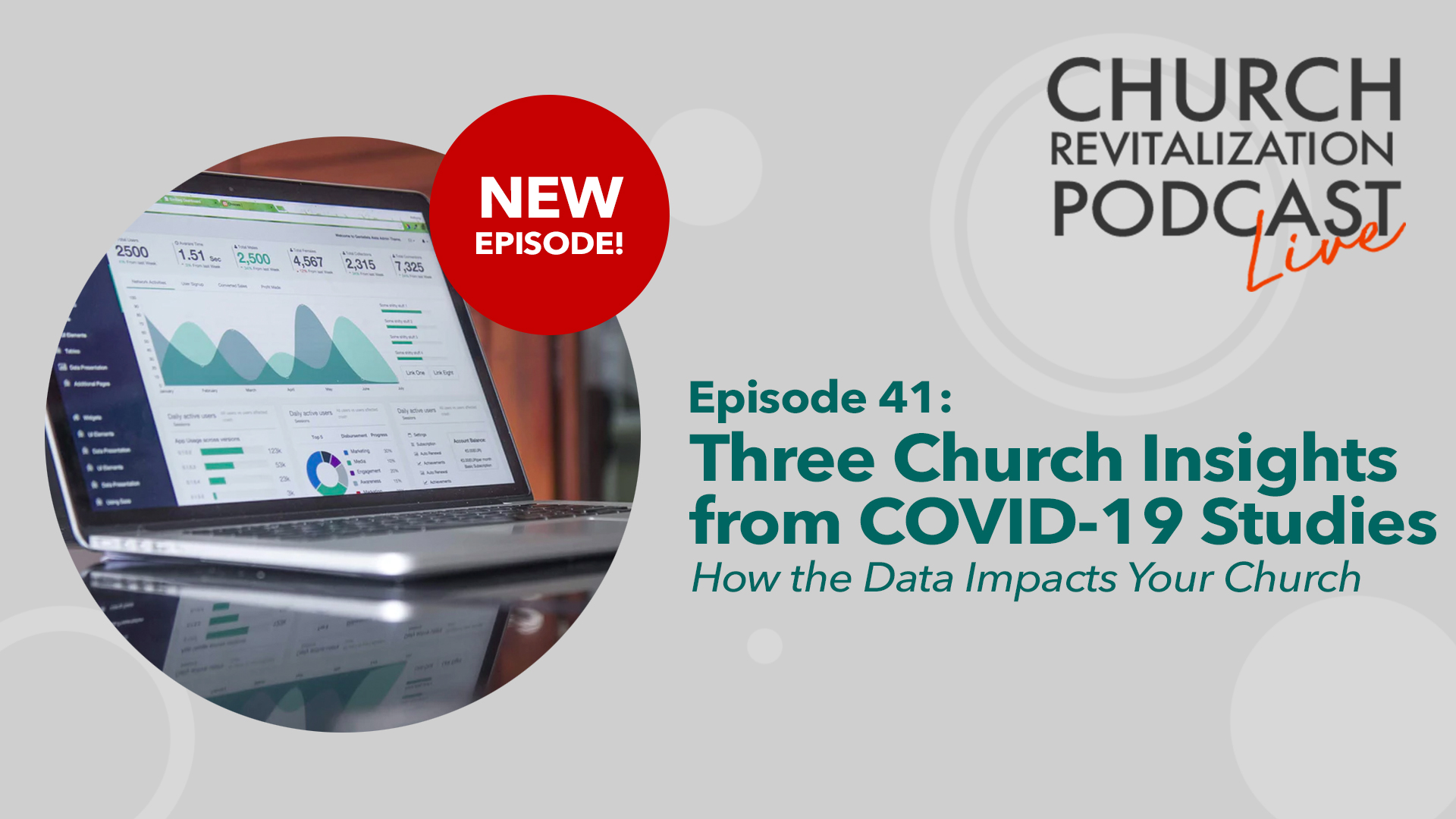Our world is constantly inundating you with statistics, data, and reports. Cutting through the clutter can be difficult when all you want to do is get the most relevant information you need to make informed decisions.
Our team has been sorting through the studies for you, and we’ve found three critical insights to help your church make informed decisions as you move to reopen your campus. You can watch the video version of this podcast on Facebook or YouTube.
Here are three church insights from COVID-19 studies to help you prepare to reopen:
1) Expect very low attendance (around 30% of pre-COVID attendance) on your first Sunday that you reopen.
Jackson County, Missouri conducted a study gauging their citizens’ readiness to go to various locations such as a restaurant, bar, sporting event, or place of worship. The study found that approximately 30% of the 9,500 respondents felt ready to go back to church right now, no preconditions. Another roughly 45% felt ready to go back with some sort of precautions in place. The remaining 25% or so claimed they wouldn’t feel comfortable coming back to church until there was a vaccine.
A couple of notes. First, Jackson County isn’t your county. Missouri isn’t your state. So your mileage may vary with this data. However, our team has been tracking anecdotal evidence through social media, and that 30% number interestingly comes up frequently. This makes us think that there’s a natural bell curve at play: 25-30% early adopters, 25-30% slow to return, and the messy middle 40-50%.
Your individual church may have a different outcome. However, you shouldn’t plan on 100% coming back right away, or even 75%. Make your initial reopening plans optimistically at 60% of pre-COVID attendance and realistically around 30-40% for the first Sunday.
Over the course of the summer and the beginning of the fall, your church will likely bounce back to 75% of your pre-COVID average.
2) Acknowledge that some attenders may not come back for a very long time, or not at all.
A study from the Center for Bible Engagement found that 10-30% of church attenders may alter their in-person church attendance habits, even once restrictions are lifted. Conservatively, about 10% of people may never come back to your in-person services.
Why?
People are unique, and their reasons are as unique as they are. However, some will stay home because they’ve been conditioned by the pandemic to fear crowds and confined spaces. Others have adjusted to engaging with church online and prefer it to the in-person variety.
Our team is optimistic. We don’t think that these changes are permanent. But it’s safe to say that the effects will be felt long-term, even if not forever.
We are optimistic for two other reasons: first, your church can reach new people. It’s true that 10% of those who previously attended in-person might not be back for a long time (or ever). But that doesn’t mean you can’t fill their seat with a newcomer! You have an opportunity to be a light and reach new people. Secondly, this is a great reason to maintain your online presence. We can be frustrated that people don’t want to come back in person, or we can serve them where they are until they’re ready to journey back to the building. Let this data inspire you to innovate and develop a Great Commission-focused, high-quality online presence for the longterm.
3) Be ready for an outbreak at your church.
The CDC released a case study of a church in Arkansas where two symptomatic individuals attended a worship service with nearly 100 people. Ultimately, 35 of the church attenders were infected, and three died.
This is a cautionary tale. But there are a few acknowledgments we should make. First, this incident happened in early March. We know so much more now than we did then–about how to be safe, when we should stay home, etc. There’s a good chance that this situation would be avoided today with the knowledge we know have.
However, we should not casually this incident and think it could never happen to you. It can. If an outbreak occurs at your church, it isn’t necessarily a reflection of poor planning on your part. SARS-COV-2 is a virus. It’s microscopic. Despite all of your best efforts and precautions, people can still get sick at your church.
The potential of an outbreak should not scare you into never reopening. However, the potential for an outbreak should spur you into proactive planning. Way back in February, our team was advocating preparation for church campus closures. Not many took that seriously. Take us seriously now. Have a plan before you have an outbreak. Don’t be caught flat-footed. In a later article and podcast episode, we’ll speak specifically about developing a PR plan for this kind of situation. But for the moment, begin to think about how your church will respond if there is an outbreak on your campus:
- How will you contact attenders? What will you say?
- How will you protect the personal privacy of infected COVID patients in your congregation?
- How will you respond in terms of on-campus ministry? Will you re-close, bring in a professional cleaning company for “deep cleaning,” enhance physical distancing measures. require masks for more people?
- How will you respond to news requests, if you get them?
- What will you communicate publicly and what will you communicate privately? What are your mandatory reporting obligations?
The good news is that you can make a plan right now when there isn’t a crisis. Then, if it happens, you’ll know exactly what to do and you won’t panic. If it never happens, you’ll sleep tight at night knowing that you were prepared regardless. It’s a win-win. Plan now for an outbreak.
—
Mark Twain famously popularized the statement, “There are three kinds of lies: lies, [darned] lies, and statistics.” It’s true. You can find any set of numbers you’d like to reinforce your feelings. However, good data can help us make good decisions.
These three data-driven insights can help your church be successful as you safely and confidently reopen your campus for ministry.


Scott Ball is the Vice President and a Lead Guide with The Malphurs Group. He lives in East Tennessee with his wife and two children. (Email Scott).

